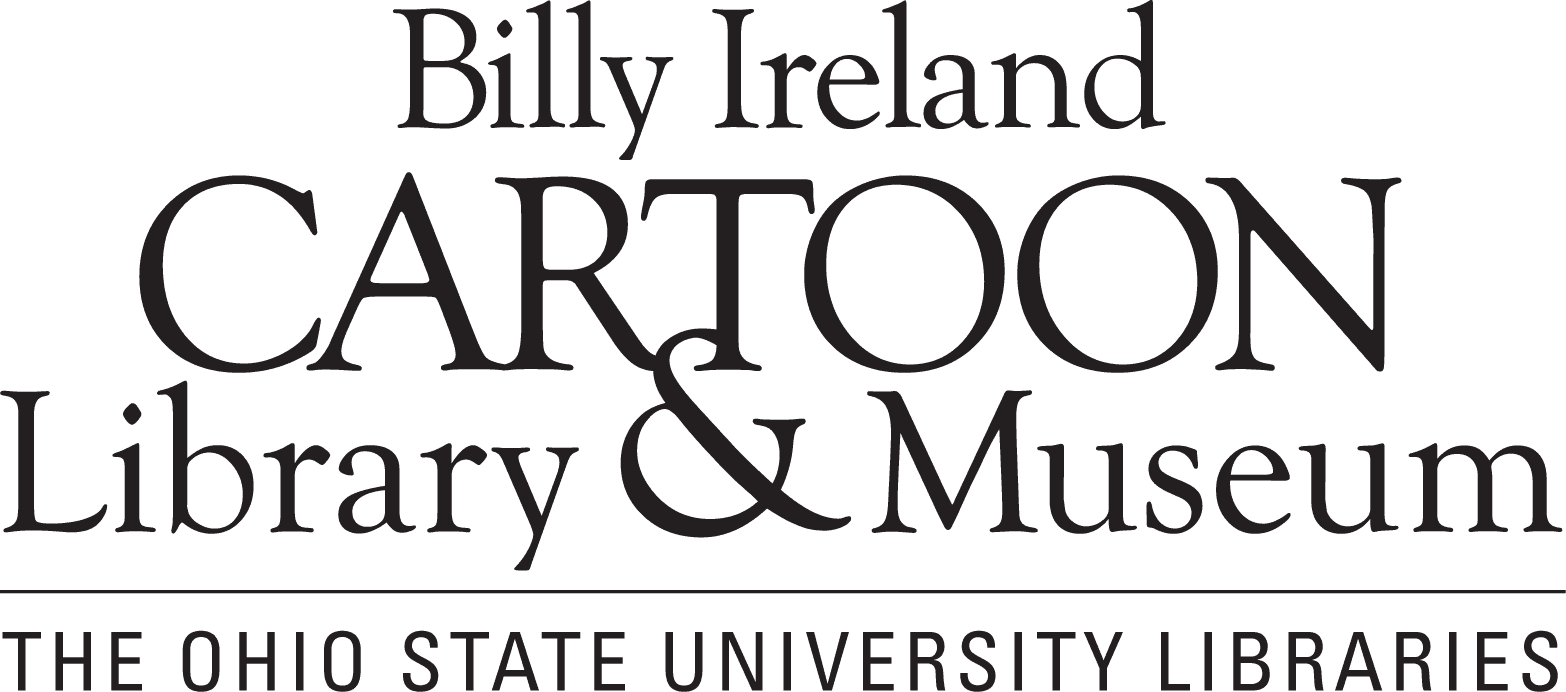Since our founding in 1977 by Lucy Shelton Caswell, the patron saint of cartoon-care, the Billy Ireland Cartoon Library & Museum has been curated by women. It is no secret that the world of cartooning is largely a man’s world, especially 30+ years ago when the Cartoon Library was first formed. With so much of the negative news and attention surrounding the treatment, representation, and position of many women in comics- it is an extra point of pride for us as females to celebrate running the largest collection of cartoon art in the world.
In the beginning of January 2011, the indomitable Jenny Robb became the head curator after Lucy’s retirement. Jenny had come to us from the Cartoon Art Museum in San Francisco, where she was the head curator for five years, starting in 2000. With a background in history and museum studies, Jenny is a leading authority on political and editorial cartoon art, and an endless source of knowledge and passion for the form. As Jenny carries us through the transition of expansion into Sullivant Hall, she has pushed to bring on two new curators to help guide the way and help support the growth of our collection. One being myself (Caitlin McGurk), and the other Wendy Pflug- who I am thrilled to introduce below.
Wendy came on as the Associate Curator at the Cartoon Library just this past December of 2011. In the day-to-day, Wendy is essentially responsible for managing our entire collection. To prepare for our big move, she is doing a collection survey which consists of reviewing every single collection we have received since the 1970s, and assessing how we have cataloged it and how we provide access to it. An important part of this process is devising plans for arranging unprocessed collections: is maintaining the original order important for a specific collection, or is there another arrangement that would intuitively make for the highest ease of access? Where would a researcher look first? When working with a collection of the magnitude of the Cartoon Library, being able to understand what we have, how much we have, and what needs to be done to make it available and findable is essential in prioritizing the work process, though not at all simple. She hopes to have a complete survey by 2013. On top of Wendy’s collection assessment focus, she is also working with our Japanese Subject Specialist to devise a new collection development policy for our Manga collection of 17,000 volumes.
Wendy graduated from the University of Michigan with an MLIS in Archives and Records Management in 2004, and has worked with a fascinating range of archival collections since then. These have included The History Factory in Virginia, where she was contracted to catalog and organize the archives of a pharmaceutical company–Abbott Labs–including over 5,000 pharmaceutical samples. She has also worked for the African American Jazz Preservation Society of Pittsburgh as an archivist, with the records of the UE Union, and more. With an obvious thirst for learning about and mastering such unique collections in the past, diving into a cartoon art archive was just another welcomed challenge. Wendy feels that: “Processing is a puzzle- you have all of these separate pieces, but when you figure out how to put them together you can construct someone’s entire life, or the history of a corporation. Every piece matters, and you need each one to make sense of the rest.” She describes herself as a “generalist” or a “tour guide”, using her career as a way to spend life learning and understanding the history of others and the human condition. That is the humble and inspiring attitude of a natural-born librarian, and we are all absolutely thrilled to have her on board with us!
Now to quickly introduce- myself!
I’m Caitlin McGurk, the Visiting Curator here at the Billy Ireland Cartoon Library & Museum. I started this dream position a little over a month ago on February 1st, and couldn’t be happier to be here. My focus is on outreach and engagment, to further cultivate and raise awareness of our collection. This spans everything from running our social networking sites and blog, to working with contemporary cartoonists to keep our collection modernized, teaching classes at the Cartoon Library, assisting in the scheduling, planning and designing of exhibits, and more. With our upcoming move to Sullivant Hall, I hope to greatly increase our public presence, and someday turn Columbus into the top destination in America for cartoonists and comic fans alike! Hey, you never know.
As an avid comics fan and cartoonist/zinester myself, when going into school for my MLIS degree I was absolutely fixated on working with the comics medium- someway, somehow! The prophecy was fulfilled, and my professional experiences as a librarian have just about all involved working with comics. These include Marvel Comics, Columbia University’s Bulliet Comics Collection, The Center for Cartoon Studies, and more. I have also written for Diamond Comics’ Bookshelf magazine for educators and librarians, self published my own works, and try to remain active in the comics community at large. Becoming a comics librarian was the best idea I have ever had.
Thanks for keeping up with our blog, and I hope you’ll check back to find updates about female comics creators and contributors for the rest of Women’s History month!






Recent Comments